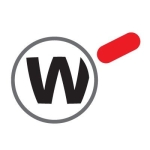While the solution is good, we wish to have something that is a bit better, as the threats have evolved over time. We have been using Check Point for more than than eight years and are interested in a better solution. We entered a review site which ranks top security firewalls and saw that Palo Alto is ranked number one, followed by Fortinet, with Check Point in the lead. We noticed that Palo Alto was much more expensive than Fortinet, but wished to know which key features differentiated the two.
Though we did not take issue with the price of Check Point NGFW, we felt that it was providing us with inadequate support here in Uganda. This is why we decided to switch solutions. I should note that I do not have a technical background and am responsible for procurement.
The value we were getting for our money was an issue. I work for a bank for which security is very important, but we were not being assured of the appropriate support. The licensing fees we were paying did not equate with adequate local support. We had already had a bad experience with Check Point, so we did not bother with a quote from it and, instead, got one from several local companies that can support either Palo Alto or Fortinet.















